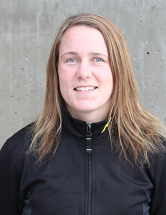Due to copyright issues, an electronic copy of the thesis must be ordered from the faculty. For the faculty to have time to process the order, the order must be received by the faculty at the latest 2 days before the public defence. Orders received later than 2 days before the defence will not be processed. After the public defence, please address any inquiries regarding the thesis to the candidate.
Trial Lecture – time and place
See Trial Lecture.
Adjudication committee
- First opponent: Professor Jan Willem Gorter, University Medical Centre Utrecht, The Netherlands
- Second opponent: Associate Professor Katarina Lauruschkus, University of Lund, Sweden
- Third member and chair of the evaluation committee: Professor II Nina Østerås, University of Oslo
Chair of the Defence
Professor II Anners Lerdal, University of Oslo
Principal Supervisor
Reidun Birgitta Jahnsen, University of Oslo
Summary
People with disabilities are less active than people without disabilities.
- Can access to a “tailored” tricycle lead to increased mastery and cycling activity and general activity level?
- Can specific tests predict which tricycle that fits best to each individual?
Children, youth and adults planning to apply for a tricycle as an assistive device for physical disability were invited to participate. The 6-Minute Walk Test, the Trunk Impairment Scale, the 30-Second Sit-to-Stand Test, the Oxford Scale of muscle strength and range of motion testing were used to determine the most appropriate test for predicting the best fitting tricycle type for each individual. In addition, power (watt) when pedalling was measured. Participants also answered questions about important factors when choosing a tricycle as well as their amount of cycling, cycling performance, satisfaction and where and with whom they cycled via an online questionnaire. General activity levels before and after the participants received their tricycles were measured using an accelerometer.
In total, the study included 50 participants with a large variety of complex disabilities, who ranged in age from 5 to 79 years. None of the included tests could alone predict tricycle type. Large variations in personal characteristics and needs indicate that individual assessments and adaptations are necessary to find the most appropriate tricycle. Safety, comfort and mastery were revealed as important factors for tricycle choice. A total of 94% of the participants used their tricycle. Obtaining a tricycle led to a significant increase in cycling frequency, performance and satisfaction. However, the acquisition of a tricycle did not necessarily lead to an increased general activity level. Reported reasons for little tricycle use were insecurity, pain and bad weather conditions, whereas reasons for more use were joy, the feeling of freedom and increased mobility.
Additional information
Contact the research support staff.
